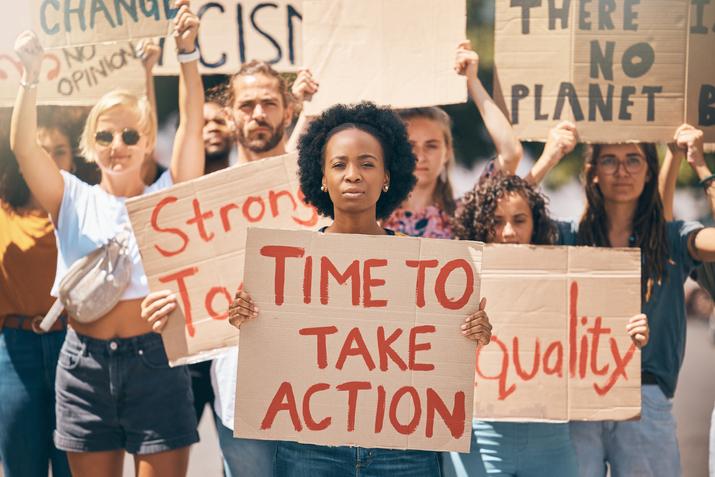Universities and colleges shape education and ethics of future leaders, so they are well positioned to drive social change towards sustainability. Although progress has accelerated over the past decade, most efforts have failed to create systemic change, owing to three issues:
- Many sustainability professionals bypass organisational change theory, creating their own learning experiences instead. This approach leads to redundant efforts within the sector.
- Assumptions of how change happens go often unexamined, and change failure is not analysed, which impedes learning and slows down progress.
- Efforts are often action-driven and focus on individual issues rather than systemic change. Approaches that leap from one project to the next eventually run out of steam.
To close this theory-practice gap, encourage reflective practice and create strategies for structural change, sustainability practitioners must (1) understand how organisational change happens; (2) question assumptions about change at our institutions; and (3) focus efforts on leverage points that can trigger institution-wide change.
1. Understanding organisational change
Drawing on concepts from change management, such as power politics, organisational culture and systems thinking, allows sustainability practitioners to look at change through different lenses. The more you know about change theory, the easier it will be to analyse change, spot recurring patterns and identify leverage points.
- Spotlight collection: a greener future for higher education
- Read more: critical approaches to incorporating the SDGs into curricula
- THE podcast: universities aren’t too small to lead the climate crisis fight
That said, even rudimentary knowledge can help to make implementing change a lot easier. Take these practical rules of thumb derived from systems thinking as an example:
- Observe how your institution works: Reach out to stakeholders who know it well and analyse past behaviours and decisions that shaped the state of the organisation. Don’t just look for issues but value what works well and think how you can build on it.
- Invest in networks and relationships: Start working with sustainability advocates, and then gradually expand the scope to potential supporters. Use a central database to keep track of everyone you meet, where they are, what they do and what their entry point is.
- Embrace learning and flexibility: Draw explicit lessons from failures and be strategic when seizing opportunities. This means assessing opportunities before jumping into action, and setting aside ideas or projects when the timing is not right.
2. Harness tools for critical reflection
Habits, assumptions and idea systems that have been internalised over years guide many of our thoughts and behaviours, yet we still think we’re rational and objective beings. This makes it hard to admit when we’re wrong, change our minds, and be more open to new ideas.
Fortunately, we have ways to understand and manage biases, which leads to better change initiatives.
- Analyse assumptions about change: When planning the next project, identify underlying beliefs or potential biases about the outcomes and evaluate their validity. Assess the impact of these assumptions on the change initiative and explore risks and alternatives.
- Use backwards planning: Formulate an overarching goal that is clear, specific and outcome focused. Then identify the necessary steps and prerequisites in reverse order, from the goal back to the present to create a logical change pathway.
- Get the right indicators: Define indicators and corresponding mechanisms for measuring and evaluating to keep track of what changes are or aren’t happening and why. A good indicator should at least contain a target population, a baseline, a time frame and a threshold.
3. Target key areas for holistic change
Change occurs in different ways at every institution, but there are patterns that indicate that three areas can be particularly impactful in creating structural change. Assessment and reporting help with setting a performance baseline and track change. Creating a shared understanding of sustainability can improve communication across disciplines and shift views on organisational purpose. Embedding sustainability in organisational strategies, policies and key functions can lead to a redirection of resources and decision-making processes.
- Increase impact from assessment and reporting: Create structures to guarantee continuity of assessment and reporting, make time for learning and reflection after each assessment, and get a high-level sponsor to link results to management practice or strategy development.
- Create a shared understanding of sustainability: Before tackling this impact area, make sure that adequate resources, expertise, and support are available from senior management, since taking a participatory approach and conducting large-scale engagement is challenging. Get help from academic experts to formulate clear, specific, relevant and neutral questions, and ensure that outputs won’t be dismissed or lost in bureaucracy.
- Embed sustainability into the institutional framework: Integrate sustainability into vision, mission, strategy and other functions with widespread support and awareness, ensuring commitment is reinforced by an action plan and resources for implementation.
Targeting these impact areas is not an easy endeavour, and nor are driving and embedding change in complex organisational systems. The more important the goal, the more sustainability advocates need equip themselves with the right knowledge and skills, and consider not only desired outcomes, but also the processes to get there.
Nicola Andreij Rieg is a corporate social and environmental responsibility (CSER) coordinator for an international company in the food sector. He was previously a doctoral practitioner in sustainability at the Centre for Environment and Sustainability at the University of Surrey.
If you would like advice and insight from academics and university staff delivered direct to your inbox each week, sign up for the Campus newsletter.




comment